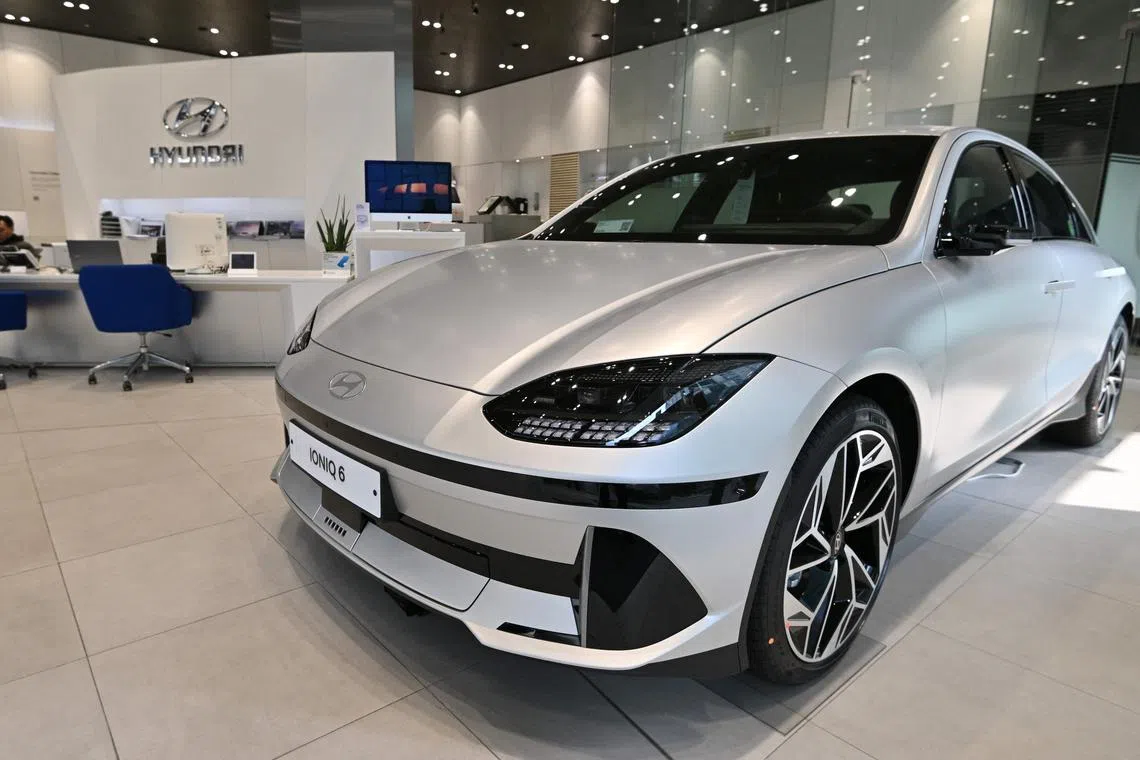More than 800 Hyundai, Kia EVs in Singapore to undergo recall for electronics fault
Sign up now: Get ST's newsletters delivered to your inbox

In total, 814 vehicles in Singapore are affected, comprising 719 from Hyundai and 95 from Kia.
PHOTO: AFP
Derryn Wong
Follow topic:
SINGAPORE – Korean carmakers Hyundai and Kia have issued a recall for three models of electric vehicles (EVs) in Singapore for potential faults in the vehicles’ charging system, which may cause them to lose power.
In total, 814 vehicles in Singapore are affected, comprising 719 from Hyundai and 95 from Kia.
These include the Hyundai Ioniq 5 – both imported and locally assembled versions – and Ioniq 6, as well as the Kia EV6.
Hyundai and Kia are owned by Hyundai Motor Group, with the three models sharing some technical characteristics.
Representatives of Hyundai Motor Group Innovation Centre Singapore and Cycle & Carriage Singapore, which is the authorised distributor for Kia, said that they are working with the Land Transport Authority on the recall.
Owners of the affected vehicles will be notified by their respective dealers on the recall process, which will involve bringing the cars to a workshop for inspection and updates. Recall work will be carried out at no cost to the owners.
The fault relates to issues with the vehicles’ Integrated Charge Control Unit, which controls charging and manages electrical power.
The same issue led Hyundai Motor Group to issue a global recall for the affected models, which include around 170,000 Hyundai and Kia EVs in South Korea and around 150,000 in the United States.
As reported by the US National Highway Safety and Traffic Administration on March 15, the fault could cause the batteries to stop charging and the vehicle to lose drive power. THE BUSINESS TIMES

